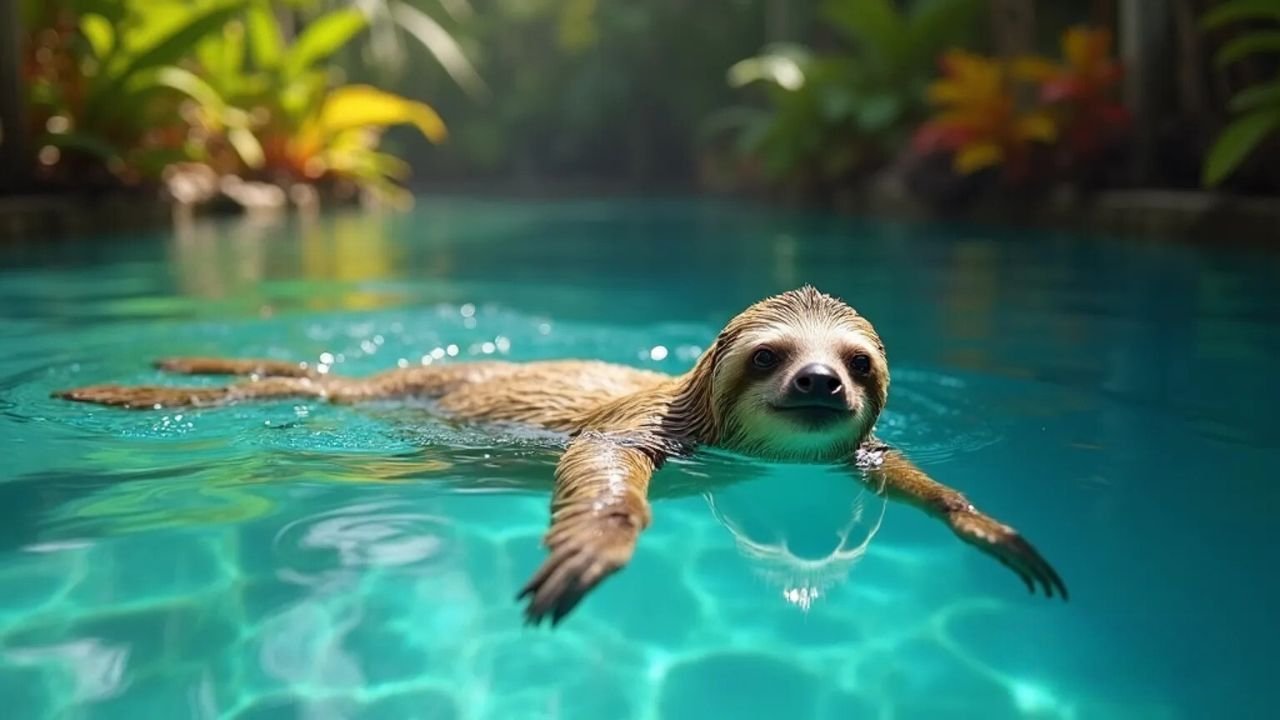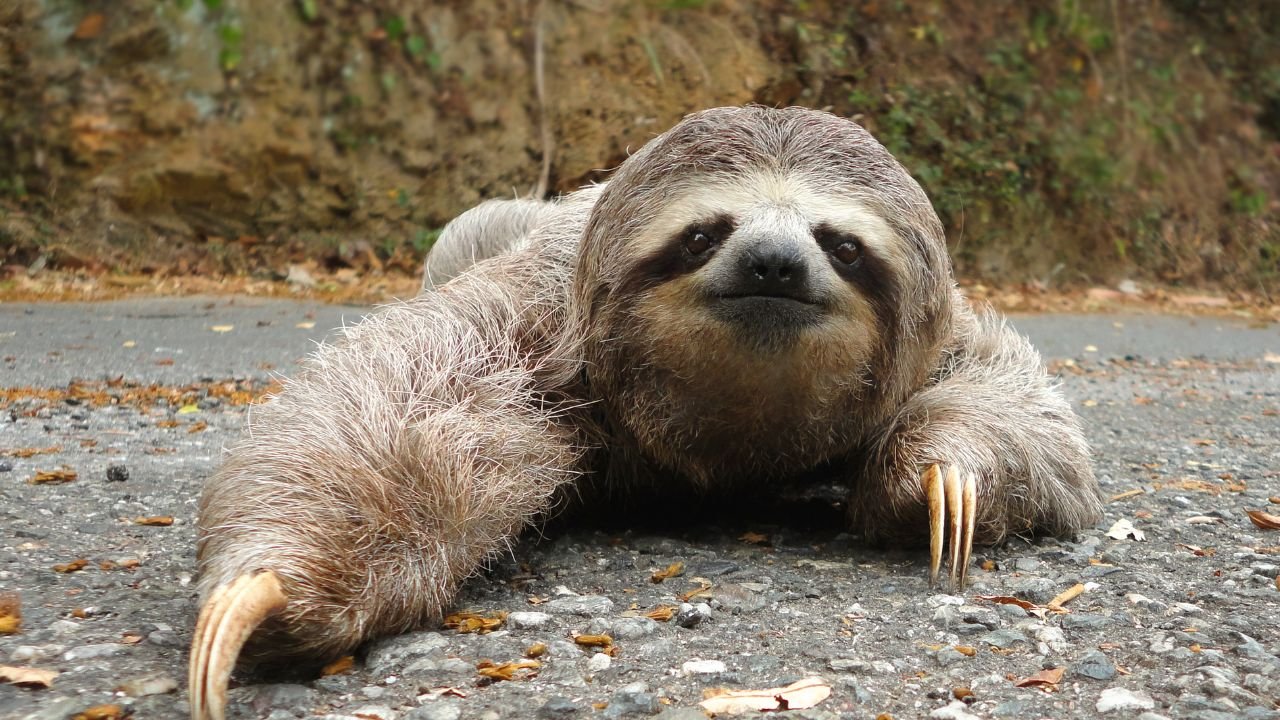Sloths are slow-moving mammals with a top speed of only about 0.15 to 0.3 kilometers per hour (0.09 to 0.18 miles per hour) on the ground). They live in the tropical and subtropical forests of Central and South America. They are known for their leisurely and sleepy lifestyle, as they spend most of their time hanging upside down from tree branches, eating leaves, and sleeping.
How Fast Can A Sloth Move?

A sloth’s top speed on the ground is only about 0.15 to 0.3 kilometers per hour (0.09 to 0.18 miles per hour), making them one of the slowest mammals on Earth. However, sloths can move slightly faster in the trees, where they feel more comfortable and secure. In the trees, sloths can reach a speed of up to 0.5 kilometers per hour (0.3 miles per hour), which is still very slow compared to other animals.
The speed of a sloth is influenced by several factors, such as their unique physiology, their low metabolism, their poor diet, and their habitat. One of the main reasons for their slow speed is their physiology. Sloths have a lower muscle mass than other mammals of their size, which means they have less power and strength for quick movements.
The second factor that contributes to their slow speed is their metabolism. Sloths have one of the slowest metabolic rates, which means they burn fewer calories and produce less energy than other animals.
A third factor that affects the speed of sloths is their minimal and poor diet. Sloths mostly eat leaves from the trees they live in, which are low in nutrition and high in toxins.
A fourth factor that influences the speed of sloths is their camouflage technique. Sloths face many threats from predators, such as jaguars, eagles, or snakes. To avoid being detected and attacked, sloths move very slowly and blend in with their surroundings.
Can Sloths move faster to escape a predator?
Unfortunately, sloths are not capable of running or sprinting, even when they are threatened. Their top speed in a dead sprint is only about 2.4 kilometers per hour (1.5 miles per hour), which is insufficient to outrun most predators. Therefore, sloths rely on their camouflage and their claws to defend themselves, rather than their speed.
How fast sloths are compared to other animals?
Animal | Speed (metres per second) |
| Sloth | 0.003 – 0.024 m/s |
| Cheetah | 28 – 30 m/s |
| Horse | 14 – 27 m/s |
| Human | 1.4 – 2.5 m/s |
| Greyhound Dog | 18 – 20 m/s |
| Jackrabbit | 16 – 24 m/s |
| Kangaroo | 13 – 16 m/s |
| Ostrich | 15 – 17 m/s |
| Gazelle | 16 – 22 m/s |
How far can a sloth move in a day?
On average, sloths travel about 40 metres (131 feet) per day. This distance may vary depending on factors such as habitat quality, weather conditions, and the specific species of sloth. Sloths have an extremely low metabolic rate, which means they move at a languid, sluggish pace through the trees.
How fast can a sloth move in water?
A sloth can swim at top speeds of about 44 feet per minute. This works out to half a mile per hour. On paper, that may seem slow, but consider this: sloths only move an average of 40 yards per day when they are on land. In water, they could cover that distance in just under 3 minutes, therefore, sloths are good at swimming as water requires less energy to move in.
Why are sloths slow?

Sloths are slow because they mainly feed on leaves, which are poor in nutrients and low in calories, and so their slow-moving arboreal lifestyle, which favours a slow metabolism, is designed to conserve energy. Sloths also live in tropical forests, where the hot and humid environment means they do not need to expend an enormous amount of energy to keep their muscles and cardiovascular system warm.
Can sloths swim?

Yes, sloths can swim and they are surprisingly good at it. They can swim three times faster than they can walk on land. And because of their ability to slow their heart rates to one-third their normal rate, they can also hold their breath for a whopping 40 minutes underwater. Sloths have a stomach filled with slowly digesting food and gas, which helps them float in the water effortlessly. Their long, curved claws also aid in maintaining buoyancy.
FAQs
Can sloths kill you?
No, sloths cannot kill you, but they can hurt you with their claws or teeth if they feel threatened or attacked.
Why do sloths have long claws?
Sloths have long claws primarily for locomotion and survival. These elongated, curved claws enable them to easily grasp and hold onto tree branches, which is essential for their arboreal lifestyle.
Are sloths dangerous?
Sloths are not dangerous at all if they are left alone in their natural environment. They pose no threat to humans unless they feel threatened.







